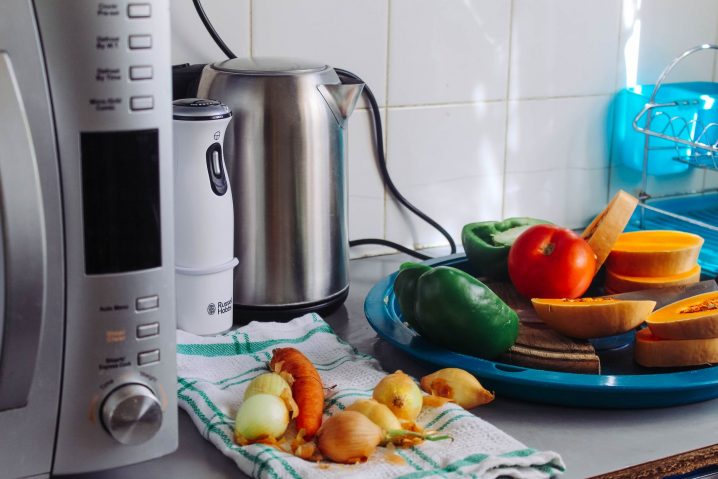Even in the digital era, there are hundreds of myths floating around our everyday home appliances. Although we all have many appliances installed in our homes, most of us are simply unaware of how these systems actually work.
Honestly, it’s not very difficult to believe these myths, particularly when you think they can save you lots of money on your utility bills or can also help you finish your work in shorter span of time.

In this post, we’re going to bust some of the most common home appliances myths so that you can get a better idea about how you can actually improve your productivity and enhance the maintenance and efficiency of your home:
- Appliances in Standby Mode Use No Power
While it is perfectly okay to think that appliances don’t use power while in stand-by-mode, the fact is that ‘sleeping’ appliances can consume a significant amount of energy. For example, a microwave on sleeping mode can gobble up to 6 watts an hour. Similarly, your conventional landline phones can consume up to 5 watts of energy even if they’re not in use.
You would be surprised to know that some appliances in sleeping mode can use up to 15-30 watts per hour. Make sure to pull the plug instead of just shutting off your devices to see noticeable difference in your electricity bills.
- No Need For Routine Maintenance
As present-day home appliances are generally durable, many homeowners believe that they do not need routine inspection to keep up with regular maintenance and care. But the fact is, the regular checkups and minor appliance repair can save you money in the long run. Keep in mind, home appliances are a long-term and expensive investment. On-time routine servicing and repair can help you avoid long-term damages and hefty cost.
- You Can Do It
Always call in a professional to repair damage instead of attempting a DIY repair yourself. Even if you consider yourself an expert DIY repair professional at your home, trying to repair appliances like fridge, washer or dryer yourself can be a worst idea.
Make sure to select a licensed professional with proper insurance coverage and right set of tools to carry forward this task for you.

- Microwave Radiations Can Harm You
Out of all the appliance myths out there, this is certainly one of the most popular one. Many people assume that their microwave emits harmful rays. There is no denying the fact that microwaves do use radiations for cooking purpose, but it can only affect humans if they come in direct contact with the rays. This means unless you go inside your microwave, you’re safe.
- Dishwashers are Full of Water When Operating
While it may sound funny to most of you, you would be surprised to know that there are a huge number of homeowners who literally refuse to open the door of their dishwashers during wash cycle for fear that their home will submerge in liquid.
Dishwashers usually uses a pump-driven impeller fixed in the bottom of tub that pushes liquid through small jet-holes positioned in spray arms that spins during the cycle and sprinkle water inside the washer. Thus, you can open your dishwasher during wash cycle without any fear.
- Manual Dishwashing Consumes Less Water than a Dishwasher
Many people believe that they’re being eco-friendly and conserving precious resources by washing their dishes manually. But, the fact is that your dishwashers consumes not more than 3 to 4 gallons of water per load. The quantity of water it takes to recurrently fill the sink and wash off dishes with a running faucet can be significantly high. If you have to wash a few dishes only, you can definitely opt for the old-fashioned way. But for a full load, there is nothing better than using dishwasher as it can save you time, effort and water.
- Cleaning the Inside of Your Fridge is Sufficient
There is no denying the fact that cleaning your fridge from inside is critical, especially if you’re a leftover food lover. However, routine servicing and proper cleaning the outside of your fridge is equally important as it improves the life as well as performance of your device.
Earlier it was not too difficult to maintain your refrigerator as condenser coils were basically fixed on the top of the device, making cleaning a breeze. Today, coils are mostly placed underneath the refrigerator. Thanks to the special brushes that are specifically manufactured to brush off the dust present on the coils. The best bit? This process needs to be done once or twice per year dependent upon the placement and condition of your fridge.

- Self-Cleaning Cycle on the Oven is Adequate
While self-cleaning feature might be a good option to finish off the cleaning of your oven, it shouldn’t provide optimal cleaning. Make sure you thoroughly clean your oven at least once a year to extend the life of your product.
- Turn Your Stovetop Ventilation Off Until There is Smoke
The general misconception about stovetop ventilation is that you don’t need to turn it on until you see smoke in your stovetop area. Ideally, you should turn on your ventilation system about 10 to 15 minutes before you start using stoves as it will promote proper airflow. Keep it running for another 5 minutes after you’re done with your cooking for best results!
- You Should Rinse Your Dishes Before Being Washed in a Washer
It obviously makes no sense to pre-rinse your dishes just to be rinsed again in the dishwasher. In fact, pre-rinsing can actually spoil your dishes as the alkaline concentration in the liquid soap becomes too high than usual. So, put your dishes right away into your washer after dinner and enjoy.
There you have it. With all of those common myths busted, you’re all set to invest in more energy-efficient and smart home appliances that can save you lots of money and will also last longer. Make sure to go through product manuals to know about how you can properly maintain your expensive appliances and don’t forget to seek professional assistance on routine basis to avoid any loss.



